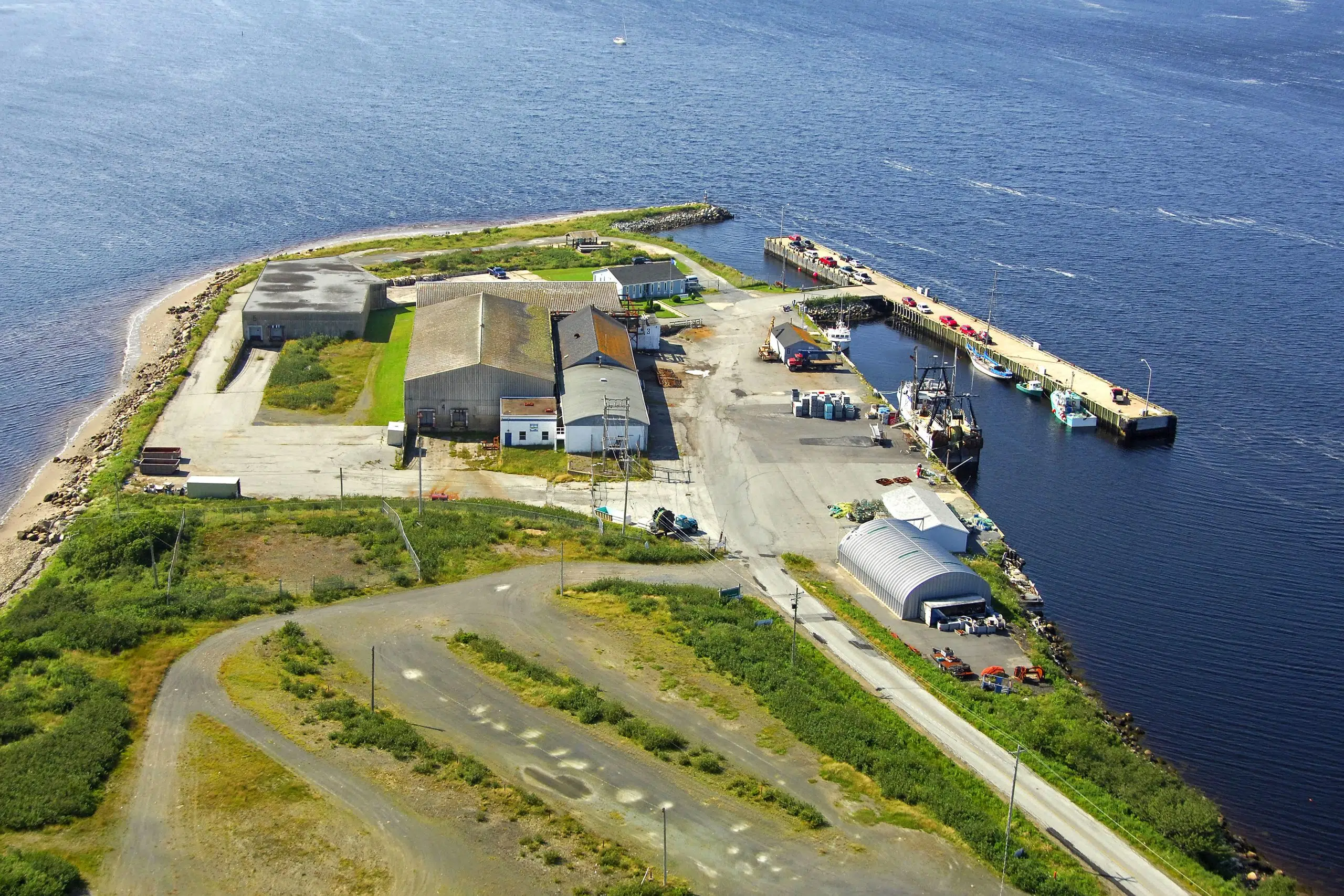
An aerial shot of Kraut Point Wharf in Riverport, NS. Photo (NS Drone Association)
The federal government does not know what caused a pollutant leak near the Kraut Point wharf, but it has committed $2.3-million dollars toward cleaning it up.
A water-soluble contaminant was first observed in 2009 as part of a routine check at the site and since then the Department of Fisheries and Oceans, (DFO) who operate the facility, have been searching for its source.
Ottawa has already spent $758,000 studying the site at Kraut Point, but the source of the pollutants is still unknown.
Testing has shown a petrochemical in the ground near Kraut Point, affecting an area contained around roughly 1,000 square metres.
DFO Project Lead, Roxanne MacLean says they are now shifting their focus to clean-up. “At this point determining the source is less of a priority than the cleanup and that’s what our work will focus on from here on out,” said MacLean in an interview.
However, Municipality of the District of Lunenburg Councilor Reid Whynot, who represents Riverport still wonders on what the initial cause may have been from.
“I was working as a fireman about 20 years ago for the Town of Bridgewater and I remember a fish plant burned down right in that area, so I imagine that might have something to do with it,” Whynot said.
While the initial source of the contaminant is still unclear, there’s now a shift in focus toward cleanup, with DFO beginning to work on an extraction site to remove the contaminants from the ground.
The plan is to extract the pollutant over a two-year period, after which they will monitor the site closely for another three years.
MacLean says extraction will be most efficient in the early stages of the project when there is more of the pollutant to be removed, but as it’s underground it will be challenging to determine how much of the pollutant is left.
Adding to the complication is the busy nature of the Kraut Point wharf which is home to 26 fishing vessels, the largest being the Atlantic Destiny, a large scallop factory freezer ship owned by Ocean Choice International.
Containers to house what is pumped out of the site have already been erected nearby and they will house the extracted pollutant until it can be recycled at a later date.








